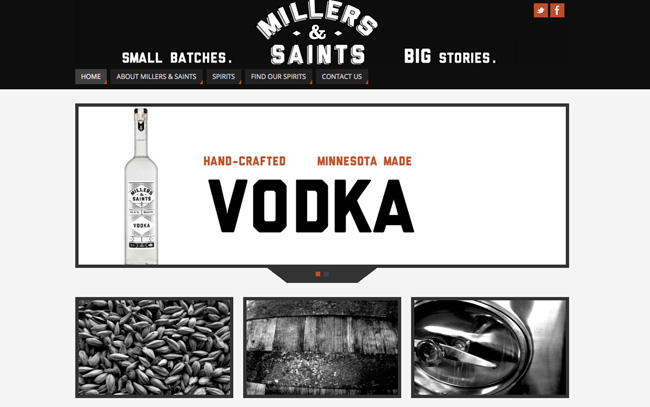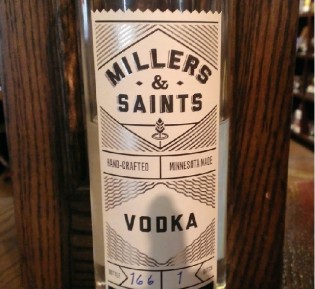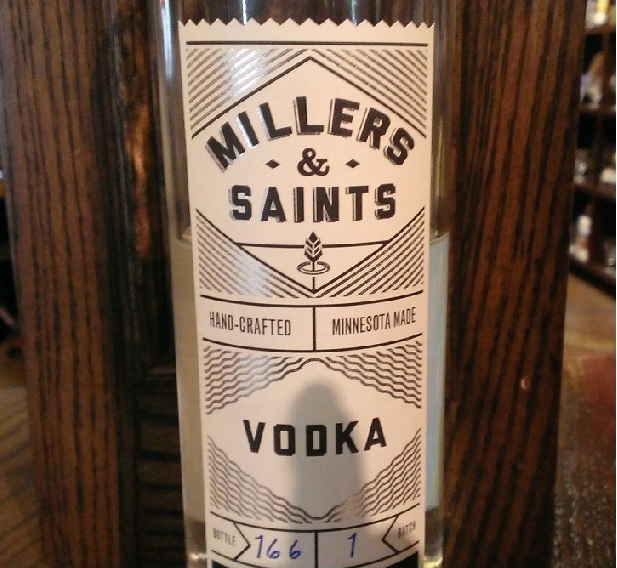
Vodka is known in the cocktail world as the most flavorless and odorless of spirits, functioning as a simple alcohol vehicle for the American mixed drink. In fact, the best vodkas are essentially neutral and devoid of character. They are sought after for what they lack, not what they contain.
Most of the work in distilling this unobtrusive liquor is eliminating flavors from the initial product, called the “wash.” Filtration with activated charcoal, resulting in nearly pure ethanol, can be done within the still or afterwards.
But when it comes to plain ethanol, Joe Muggli, the president/distiller of Millers & Saints in St. Louis Park, would rather clean his equipment with it than bottle and sell it.
 “I like to describe our vodka as a spirit for beer and whiskey drinkers,” he says, while running the end of a batch through the copper still, a 5-hour process. “We want our vodka to have a hint of character — vanilla and caramel — to showcase the craft of craft distilling.”
“I like to describe our vodka as a spirit for beer and whiskey drinkers,” he says, while running the end of a batch through the copper still, a 5-hour process. “We want our vodka to have a hint of character — vanilla and caramel — to showcase the craft of craft distilling.”
Muggli’s newly founded company distills in partnership with Steel Toe Brewing, which brews the mash that is the basis of the vodka-making process. Muggli is related by marriage to the owners of the Steel Toe brewery, where the still is also housed.
 Many tiny glasses line the table as Muggli works. Most of the separation of the usable portions from the undesired alcohols is done by smell and taste. “We believe consumers want a product like the one we’re producing. That’s the craft in it,” says Muggli, referring to the way in which the distillation process is halted before the character is lost. No lab equipment is in sight, save a jar of hydrometers. The process is a display of refined trial and error done by the Siebel Institute-trained co-owner.
Many tiny glasses line the table as Muggli works. Most of the separation of the usable portions from the undesired alcohols is done by smell and taste. “We believe consumers want a product like the one we’re producing. That’s the craft in it,” says Muggli, referring to the way in which the distillation process is halted before the character is lost. No lab equipment is in sight, save a jar of hydrometers. The process is a display of refined trial and error done by the Siebel Institute-trained co-owner.
The recipe doesn’t read like that of a typical vodka — no corn, beets, or potatoes are used. The Steel Toe Brewers collaborated with Millers & Saints, and after trying many blends, developed a 100-percent wheat wash. Five-hundred-gallon batches are brewed and split in half to be refined into vodka. In the end, less than 10 percent of the initial volume remains. These 20 gallons are cut with a specially engineered water to yield an 80-proof spirit. The water formulation the distillers chose affects the mouthfeel and reduces the burning heat characteristic of many liquors.
Indeed, tasting the vodka straight reveals only a small amount of burn, accompanied by strong citrus flavors and a hint of vanilla. Rather than being bland or neutral, the vodka fully occupies the palate. While the spirit would pair well with citrus or other fruit to create a perfect screwdriver or cosmopolitan, Muggli recommends drinking it neat.
Details are critical when bringing one of Minnesota’s few craft vodkas to a competitive market; Muggli and his partner and father-in-law, Ron Olney, keep local interest in mind at all levels of production. The name refers to the Twin Cities: Minneapolis, as the heart of U.S. grain milling, and St. Paul, as a hotbed during Prohibition. Using barrels from Avon’s Barrel Mill, Golden Valley’s Bell Boy distribution and Liberty Carton, Millers & Saints, even in its infancy, is a deeply rooted Minnesota business.
In the coming months and years, the distillery plans to bring whiskey and bourbon to market, but only time will tell when the spirits will be ready to hatch from their barrel shells.

